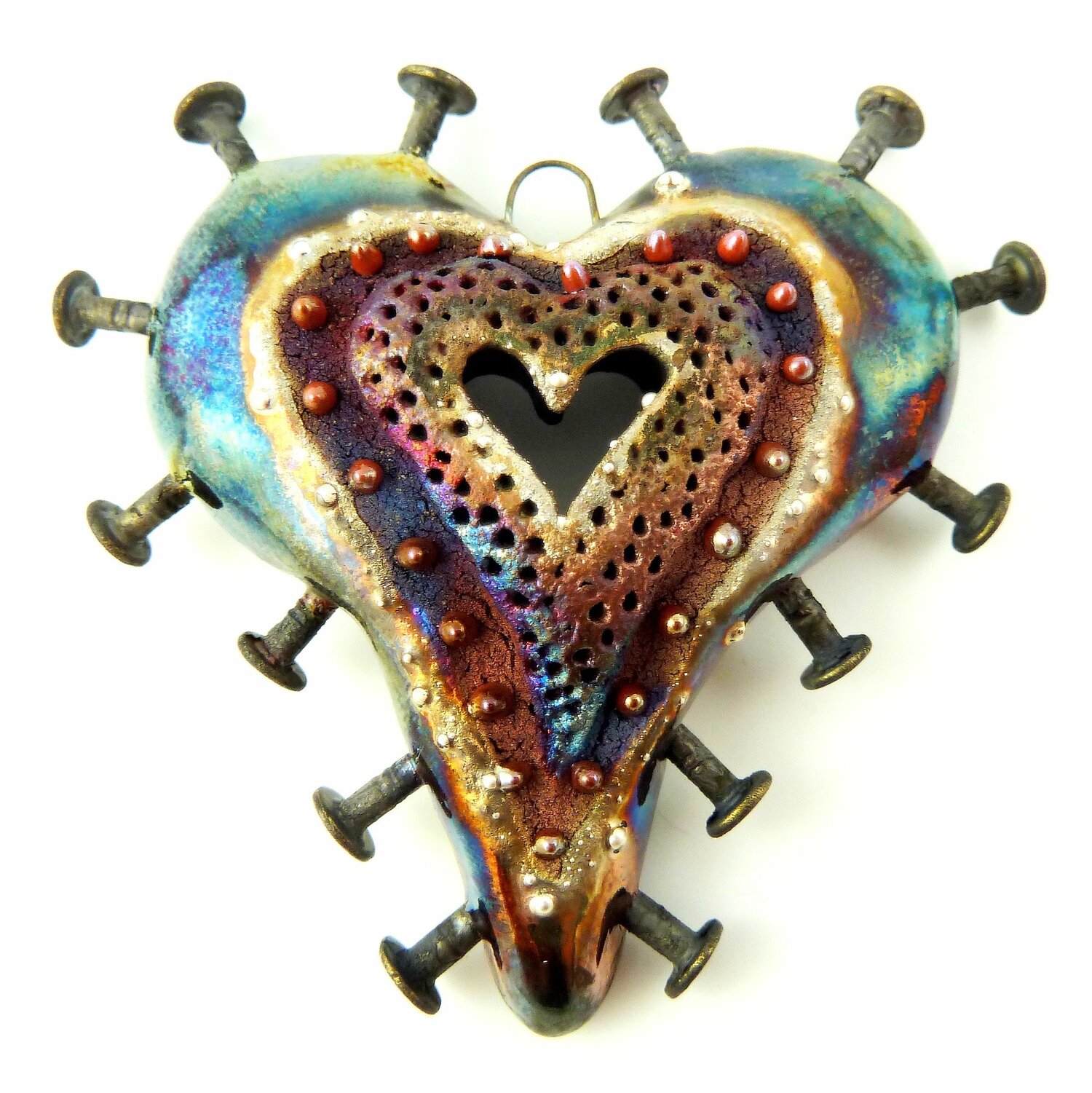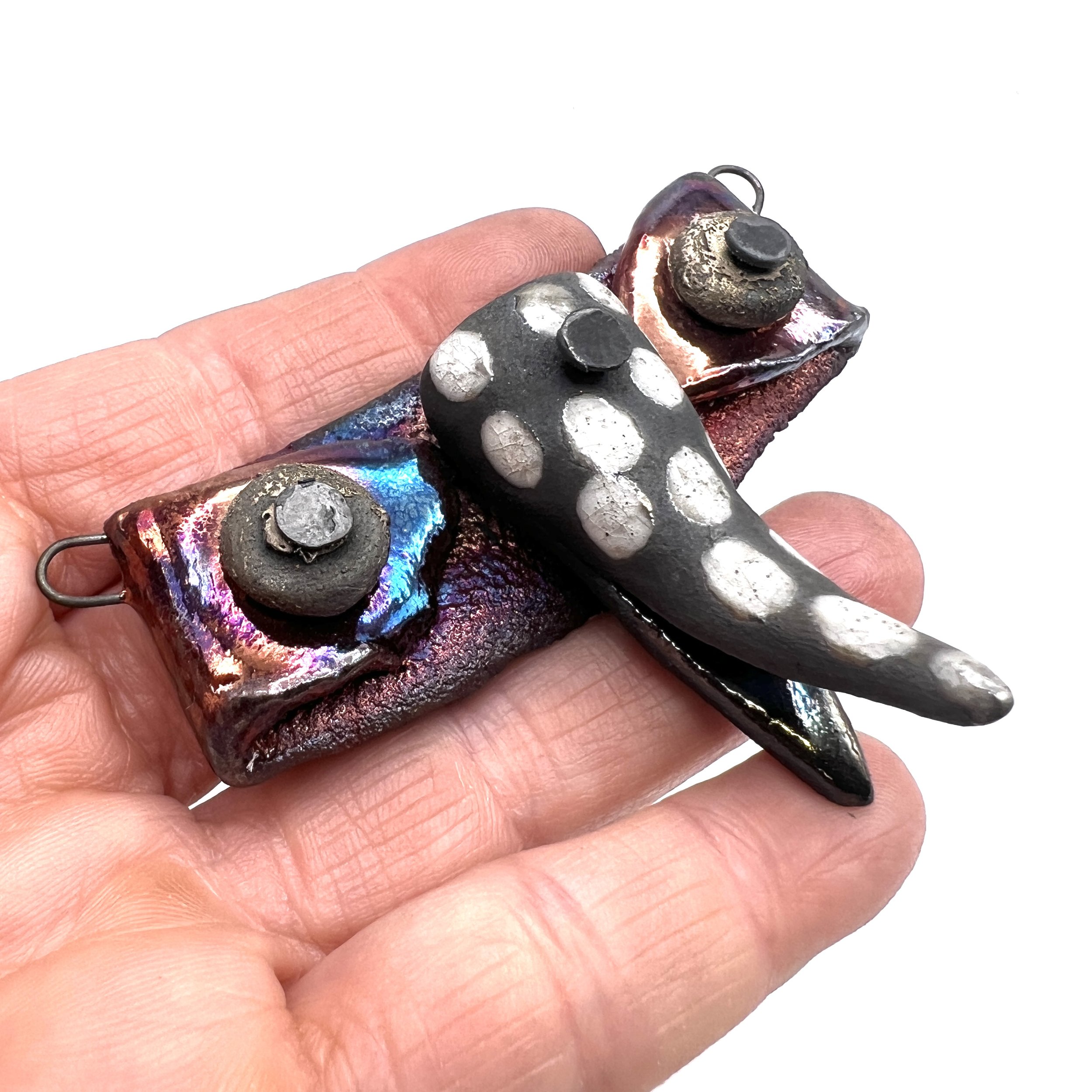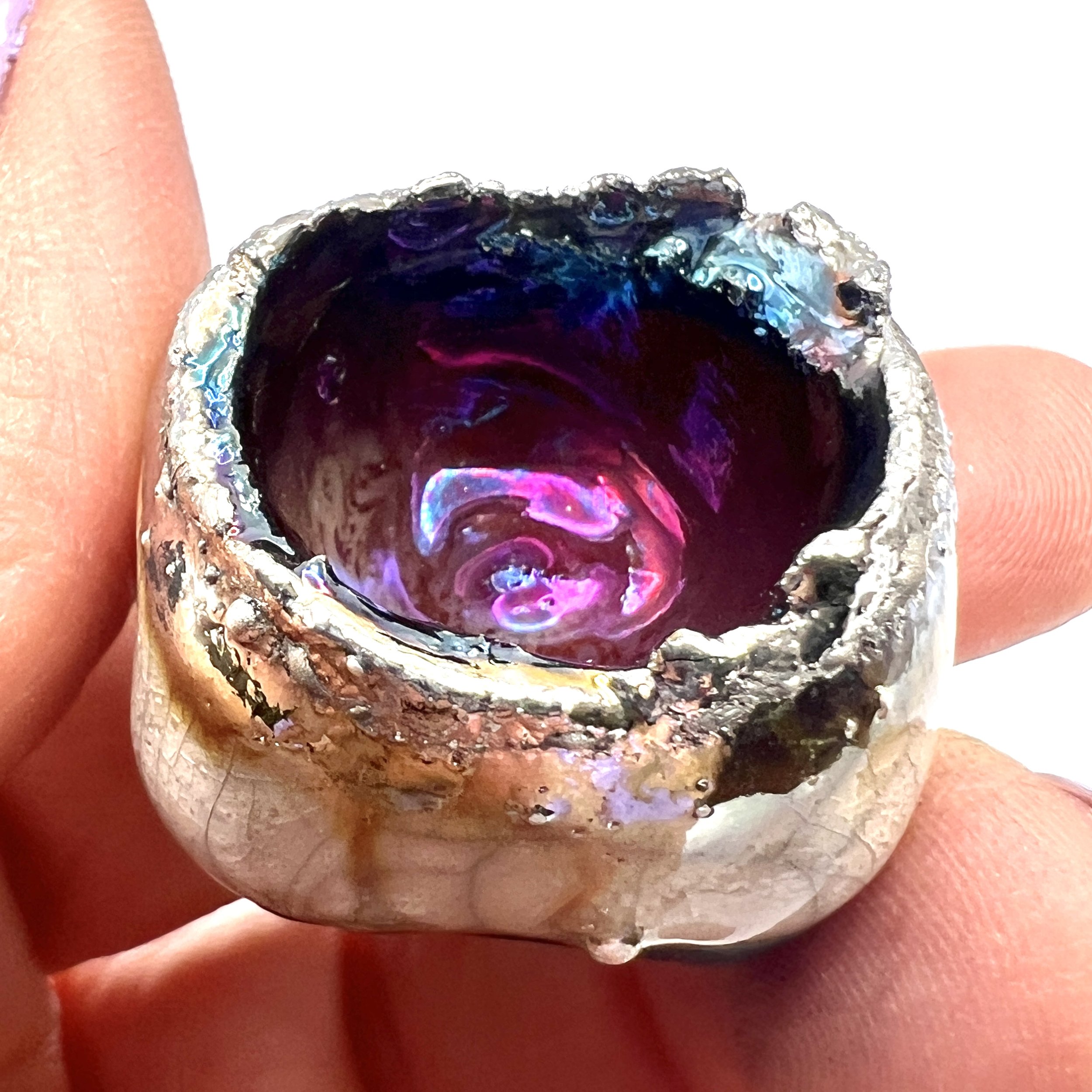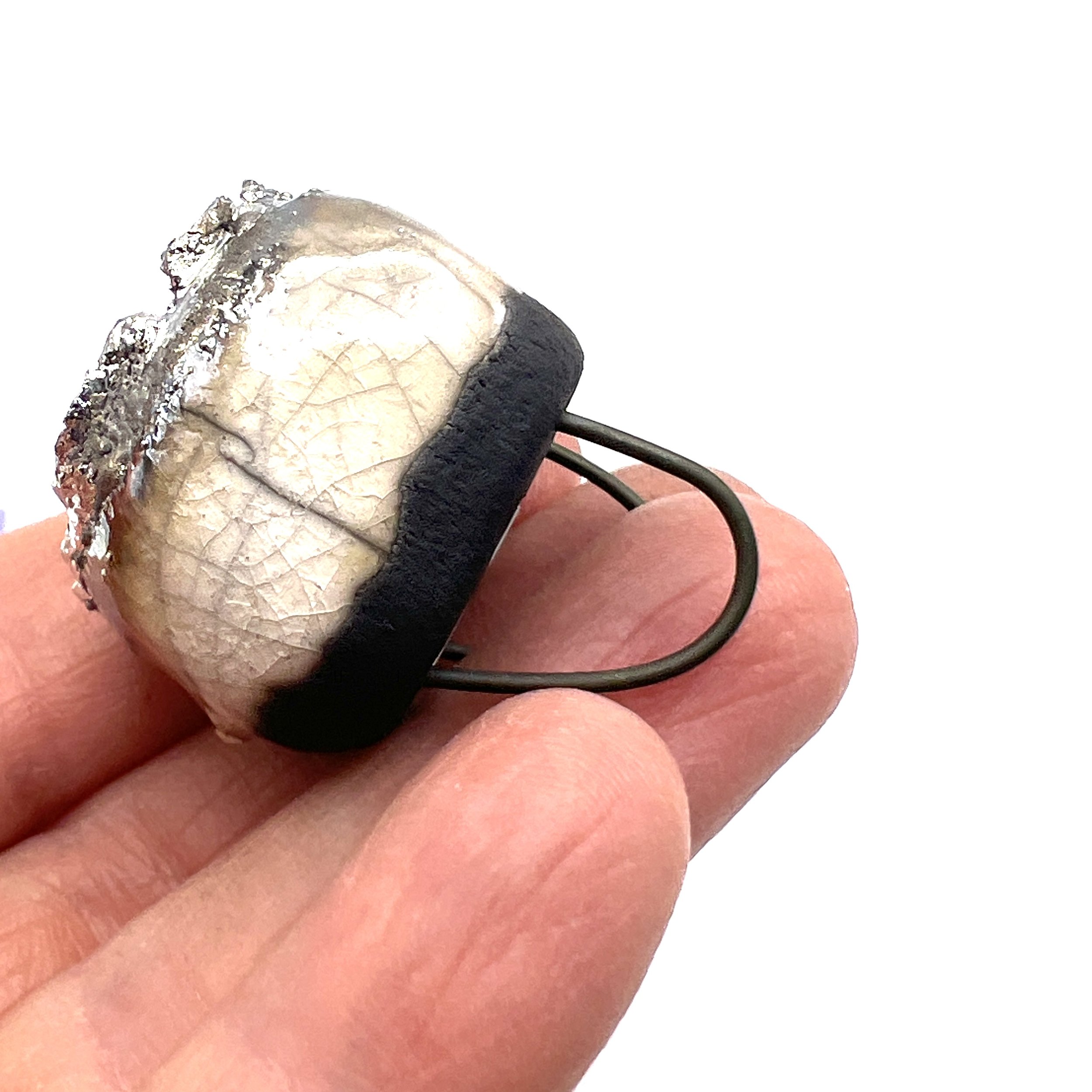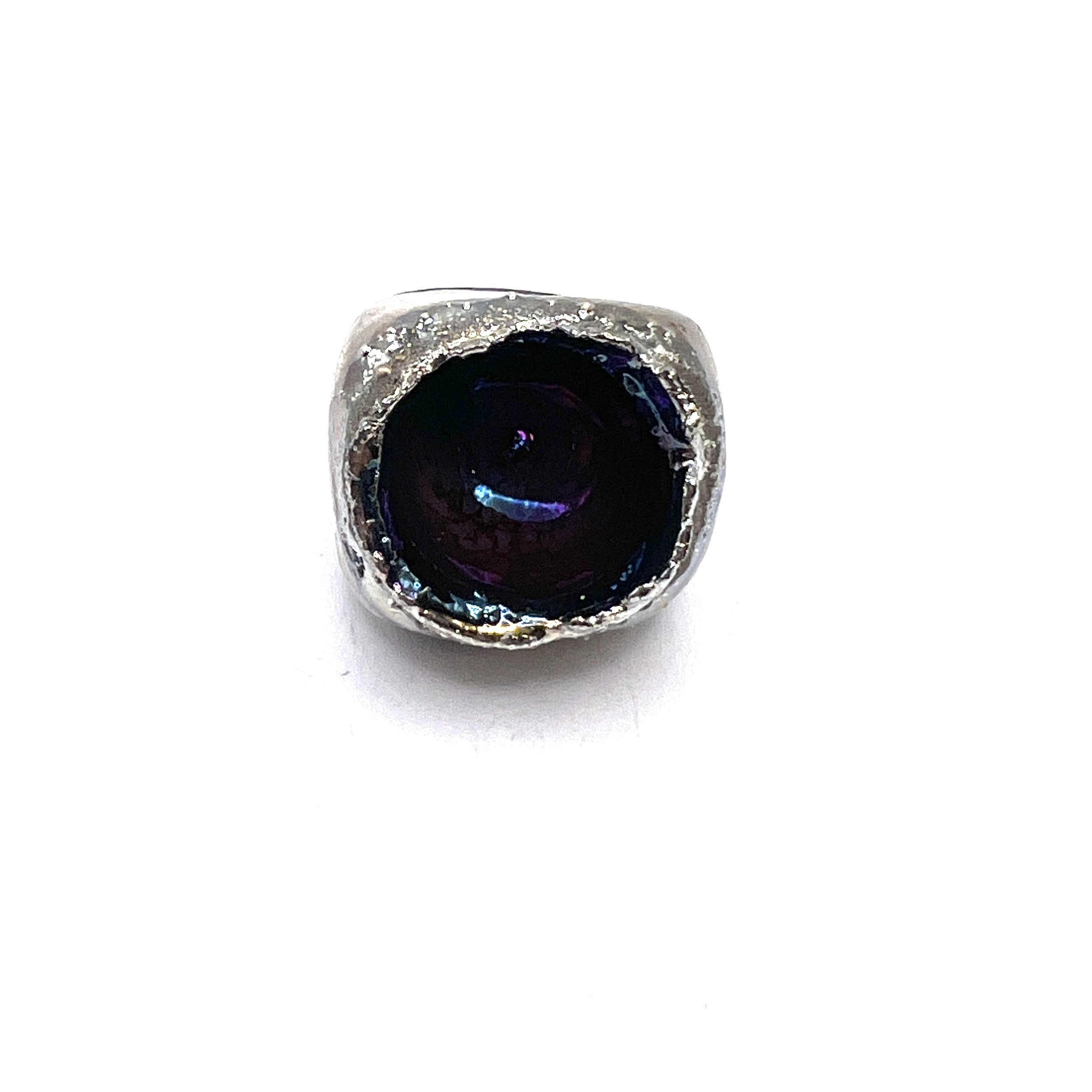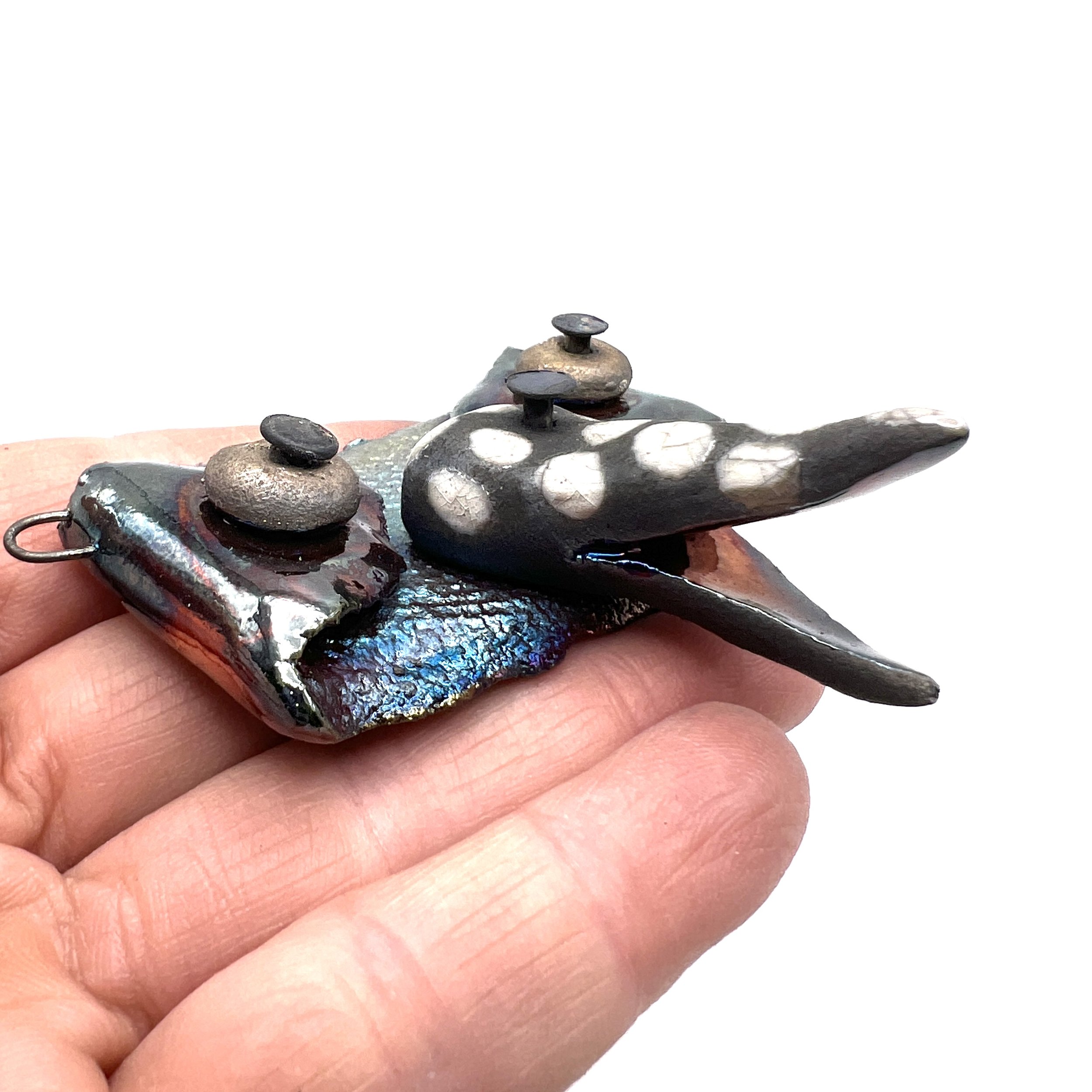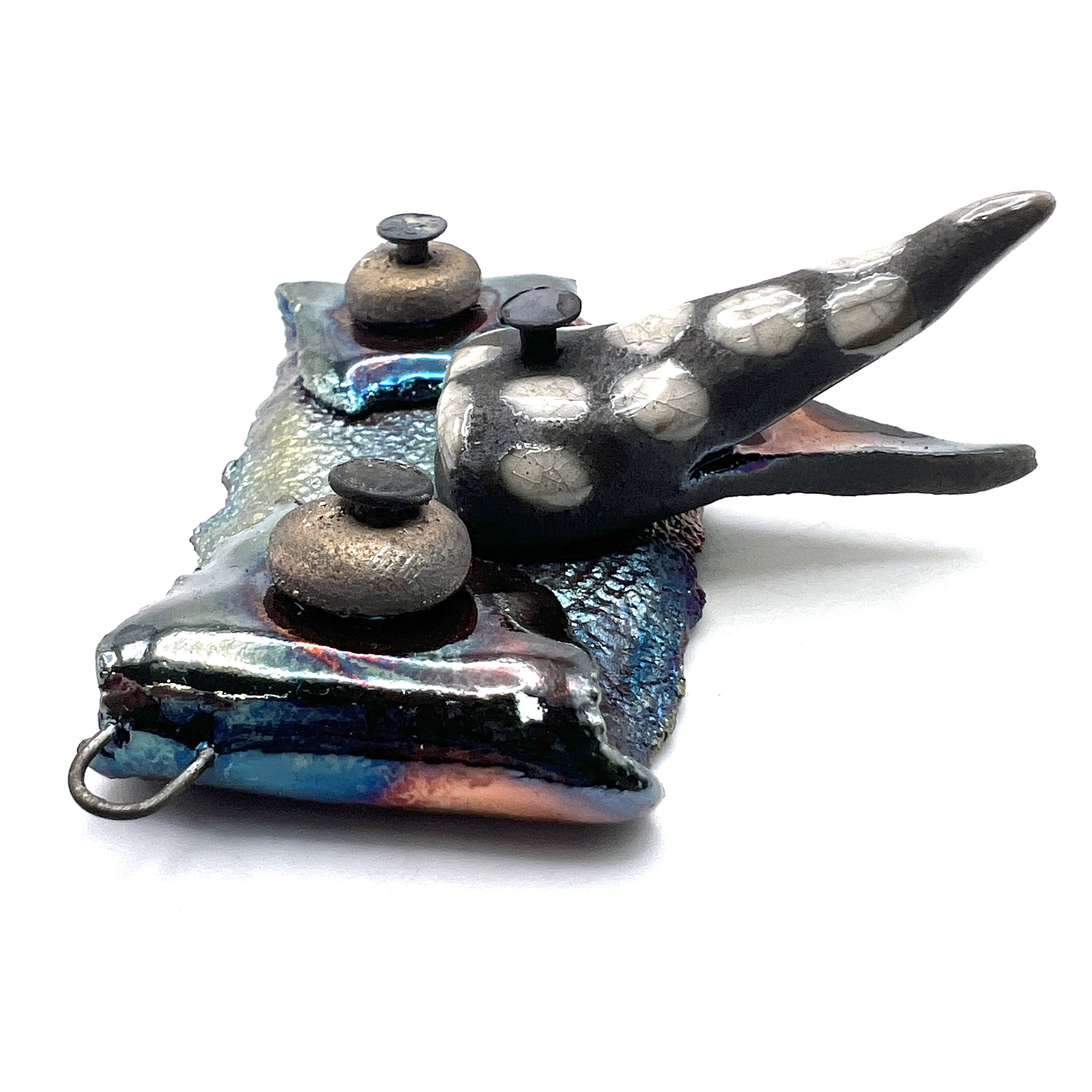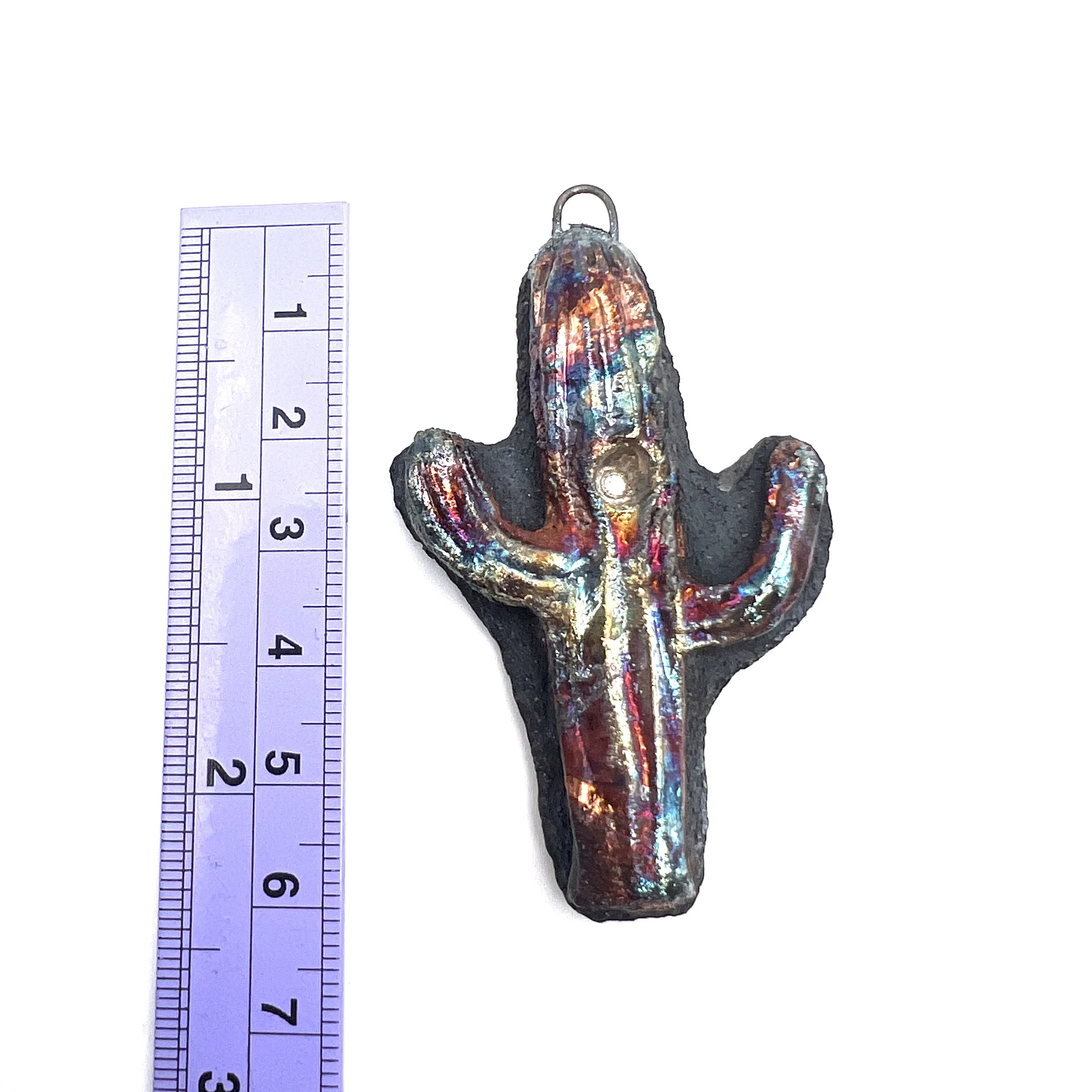 Image 1 of 4
Image 1 of 4

 Image 2 of 4
Image 2 of 4

 Image 3 of 4
Image 3 of 4

 Image 4 of 4
Image 4 of 4





Cactus Raku Ceramic Pendant Raku Jewelry Supply Handmade by MAKUstudio MAKU raku
A fun cactus pendant to bring out your desert southwest spirit! Bring a little Tucson, Arizona into your creative designs!
Cacti are truly remarkable plants that exhibit many interesting features and adaptations, some of which often go unnoticed by casual observers. For instance, contrary to popular belief, not all cacti have spines; certain species, such as the well-known Christmas cactus, possess smooth, flat stems instead. Cacti are also uniquely capable of performing photosynthesis at night through a specialized process known as CAM, or Crassulacean Acid Metabolism, which enables them to conserve precious water in their naturally arid environments. Additionally, the largest cactus species, the iconic saguaro, can grow to an impressive height of over 40 feet and may live for more than 150 years, showcasing their incredible longevity. Surprisingly, cacti are not classified as true succulents; while they do indeed store water, their unique adaptations and characteristics set them apart from other types of drought-resistant plants. Moreover, they have the ability to produce beautiful, vibrant flowers that often bloom for just a few days, creating a stunning visual display that attracts various pollinators and enhances the beauty of their surroundings.
Use this funky handmade raku pendant in your own jewelry design or tie on a ribbon and you're ready to go!
*Please handle this one with a little extra care. The arms of the cactus make this piece a bit more fragile.
*I handmade this pendant out of clay
*Bisque fired, glazed, and raku fired in my studio
*Fine silver fired directly onto the piece; black from the raku firing process where there is no glaze
*See photo for measurements
*High temperature wire loop fired directly into piece
*Signed by the artist (that's me!) on the back "MAKU"
*Raku pendant will come gift wrapped
Thanks for looking! Hope you enjoy my art!
THE RAKU PROCESS:
Raku pottery was made long ago for Japanese tea ceremonies. It was modernized later into the process you see today. This involves taking a piece of pottery that has been bisque fired and glazed then firing it in a raku kiln. The piece is then fired to about 1800 degrees F and pulled out of the kiln while still red hot then placed in a reduction chamber containing organic materials such as newspaper, sawdust, leaves, etc. The materials catch on fire, the lid is put on very quickly and carefully. The fire wants oxygen to keep going and flames often shoot across a piece, pulling oxygen from the glaze. The matte black color (a very unique characteristic of raku) is created where there is no glaze. It's so exciting and creates one of kind colors which are very hard to duplicate. Please note that raku is not food safe nor is it intended to hold liquid.
Caring for your raku piece:
Raku is fragile, please handle with care. Keep your raku in a air tight container or zippered bag when storing. Do not swim or leave your piece in water. Keep your piece out of direct sunlight, as it will affect the glaze. I wash my pieces very well, but on occasion you will see some ash residue that will rub off from the parts that are not glazed. This will come out of your clothing with no problem, but if it concerns you, you can paint clear nail polish on the back of a piece.
A fun cactus pendant to bring out your desert southwest spirit! Bring a little Tucson, Arizona into your creative designs!
Cacti are truly remarkable plants that exhibit many interesting features and adaptations, some of which often go unnoticed by casual observers. For instance, contrary to popular belief, not all cacti have spines; certain species, such as the well-known Christmas cactus, possess smooth, flat stems instead. Cacti are also uniquely capable of performing photosynthesis at night through a specialized process known as CAM, or Crassulacean Acid Metabolism, which enables them to conserve precious water in their naturally arid environments. Additionally, the largest cactus species, the iconic saguaro, can grow to an impressive height of over 40 feet and may live for more than 150 years, showcasing their incredible longevity. Surprisingly, cacti are not classified as true succulents; while they do indeed store water, their unique adaptations and characteristics set them apart from other types of drought-resistant plants. Moreover, they have the ability to produce beautiful, vibrant flowers that often bloom for just a few days, creating a stunning visual display that attracts various pollinators and enhances the beauty of their surroundings.
Use this funky handmade raku pendant in your own jewelry design or tie on a ribbon and you're ready to go!
*Please handle this one with a little extra care. The arms of the cactus make this piece a bit more fragile.
*I handmade this pendant out of clay
*Bisque fired, glazed, and raku fired in my studio
*Fine silver fired directly onto the piece; black from the raku firing process where there is no glaze
*See photo for measurements
*High temperature wire loop fired directly into piece
*Signed by the artist (that's me!) on the back "MAKU"
*Raku pendant will come gift wrapped
Thanks for looking! Hope you enjoy my art!
THE RAKU PROCESS:
Raku pottery was made long ago for Japanese tea ceremonies. It was modernized later into the process you see today. This involves taking a piece of pottery that has been bisque fired and glazed then firing it in a raku kiln. The piece is then fired to about 1800 degrees F and pulled out of the kiln while still red hot then placed in a reduction chamber containing organic materials such as newspaper, sawdust, leaves, etc. The materials catch on fire, the lid is put on very quickly and carefully. The fire wants oxygen to keep going and flames often shoot across a piece, pulling oxygen from the glaze. The matte black color (a very unique characteristic of raku) is created where there is no glaze. It's so exciting and creates one of kind colors which are very hard to duplicate. Please note that raku is not food safe nor is it intended to hold liquid.
Caring for your raku piece:
Raku is fragile, please handle with care. Keep your raku in a air tight container or zippered bag when storing. Do not swim or leave your piece in water. Keep your piece out of direct sunlight, as it will affect the glaze. I wash my pieces very well, but on occasion you will see some ash residue that will rub off from the parts that are not glazed. This will come out of your clothing with no problem, but if it concerns you, you can paint clear nail polish on the back of a piece.
A fun cactus pendant to bring out your desert southwest spirit! Bring a little Tucson, Arizona into your creative designs!
Cacti are truly remarkable plants that exhibit many interesting features and adaptations, some of which often go unnoticed by casual observers. For instance, contrary to popular belief, not all cacti have spines; certain species, such as the well-known Christmas cactus, possess smooth, flat stems instead. Cacti are also uniquely capable of performing photosynthesis at night through a specialized process known as CAM, or Crassulacean Acid Metabolism, which enables them to conserve precious water in their naturally arid environments. Additionally, the largest cactus species, the iconic saguaro, can grow to an impressive height of over 40 feet and may live for more than 150 years, showcasing their incredible longevity. Surprisingly, cacti are not classified as true succulents; while they do indeed store water, their unique adaptations and characteristics set them apart from other types of drought-resistant plants. Moreover, they have the ability to produce beautiful, vibrant flowers that often bloom for just a few days, creating a stunning visual display that attracts various pollinators and enhances the beauty of their surroundings.
Use this funky handmade raku pendant in your own jewelry design or tie on a ribbon and you're ready to go!
*Please handle this one with a little extra care. The arms of the cactus make this piece a bit more fragile.
*I handmade this pendant out of clay
*Bisque fired, glazed, and raku fired in my studio
*Fine silver fired directly onto the piece; black from the raku firing process where there is no glaze
*See photo for measurements
*High temperature wire loop fired directly into piece
*Signed by the artist (that's me!) on the back "MAKU"
*Raku pendant will come gift wrapped
Thanks for looking! Hope you enjoy my art!
THE RAKU PROCESS:
Raku pottery was made long ago for Japanese tea ceremonies. It was modernized later into the process you see today. This involves taking a piece of pottery that has been bisque fired and glazed then firing it in a raku kiln. The piece is then fired to about 1800 degrees F and pulled out of the kiln while still red hot then placed in a reduction chamber containing organic materials such as newspaper, sawdust, leaves, etc. The materials catch on fire, the lid is put on very quickly and carefully. The fire wants oxygen to keep going and flames often shoot across a piece, pulling oxygen from the glaze. The matte black color (a very unique characteristic of raku) is created where there is no glaze. It's so exciting and creates one of kind colors which are very hard to duplicate. Please note that raku is not food safe nor is it intended to hold liquid.
Caring for your raku piece:
Raku is fragile, please handle with care. Keep your raku in a air tight container or zippered bag when storing. Do not swim or leave your piece in water. Keep your piece out of direct sunlight, as it will affect the glaze. I wash my pieces very well, but on occasion you will see some ash residue that will rub off from the parts that are not glazed. This will come out of your clothing with no problem, but if it concerns you, you can paint clear nail polish on the back of a piece.
